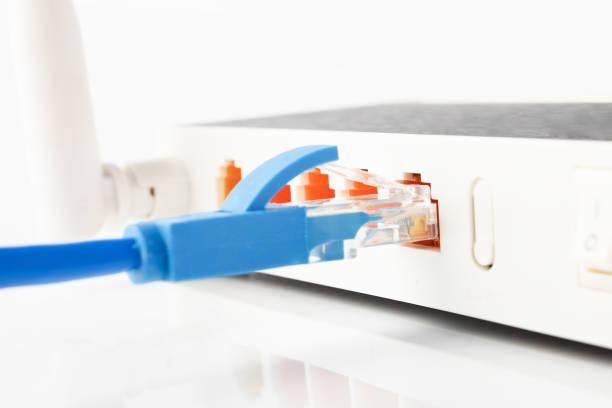Did you know that the internet connection we all rely on, whether at home or in the office, is more intricate than simply plugging in a cable? WAN, or Wide Area Network, plays a critical role in connecting us to the world wide web. Understanding how to configure WAN setup on a router is like unlocking the door to a smooth and secure internet experience. This guide will walk you through every step, ensuring that your connection is not just functional but optimized for performance.

What is WAN?
Wide Area Network, or WAN, is essentially the lifeblood of your internet connection. Unlike LAN (Local Area Network), which connects devices within a limited area like your home or office, WAN connects multiple LANs over long distances, facilitating the connection between your local network and the vastness of the internet. Think of WAN as a bridge that connects your private network to the broader online world, allowing data to travel between them.
Setting up your WAN correctly is vital for both security and performance. Incorrect settings can lead to a sluggish connection, frequent drops, or even exposure to security threats. Whether you’re running a business or just trying to stream the latest series at home, having a well-configured WAN setup is non-negotiable. It’s not just about getting online—it’s about staying online securely and efficiently.
Preparing for WAN Setup
First, you’ll need the right equipment. This typically includes a modem (provided by your ISP), a router, and Ethernet cables. It’s also crucial to have access to your ISP (Internet Service Provider) details, which might include your account information, username, password, and specific WAN setup instructions. Don’t forget to dig out your router’s manual—it can be a lifesaver when you need to find specific settings or troubleshoot issues.
Next, identify your router’s WAN port. This is usually marked differently from the LAN ports (which connect to devices like computers and printers). The WAN port is often colored or labeled differently and is the gateway for your router to connect to the internet via the modem. Connecting your modem to this port is the first step in setting up your WAN.
Step-by-Step Guide to Configuring WAN
Now that you’re prepped and ready, let’s dive into the actual setup process. Follow these steps carefully, and you’ll have your WAN configured in no time.
Connecting Your Router
Start by powering off both your modem and router. Using an Ethernet cable, connect your modem to the router’s WAN port. Once connected, power on the modem first, wait for it to fully boot up, and then power on the router. This sequence ensures that your router correctly picks up the internet signal from the modem.
Double-check all connections. Make sure the Ethernet cable is firmly plugged into both the modem and the WAN port of the router. Loose connections can lead to intermittent internet access, causing unnecessary frustration. Once you’ve verified the connections, observe the lights on your router. The WAN indicator should be lit up, signaling that the router is receiving an internet signal.
Accessing Router Settings
To configure the WAN settings, you’ll need to access your router’s interface. This is typically done through a web browser. Enter the router’s IP address into the browser’s address bar (commonly 192.168.1.1 or 192.168.0.1). You’ll be prompted to enter a username and password. If you haven’t changed these from the default, they’ll be listed in your router’s manual. Logging in gives you access to all the settings you need to configure your WAN.
Once inside the router’s interface, navigate to the WAN settings menu. This can usually be found under sections like “Internet,” “Network,” or “Advanced Settings,” depending on your router’s make and model. Familiarizing yourself with the layout of this interface will make the setup process smoother.
Configuring WAN Parameters
The first thing you’ll need to do is select the correct WAN connection type. This depends on what your ISP uses. The most common types include PPPoE (Point-to-Point Protocol over Ethernet) and Dynamic IP (DHCP). PPPoE requires you to enter a username and password provided by your ISP, while Dynamic IP automatically assigns an IP address without needing manual input.
If your ISP uses PPPoE, you’ll need to enter the provided username and password into the corresponding fields. For Dynamic IP, the router typically handles the configuration automatically. However, in some cases, your ISP might provide a static IP address, which you’ll need to input manually. This includes entering the IP address, subnet mask, gateway, and DNS servers as provided by your ISP.
Advanced WAN Settings
DNS (Domain Name System) settings are critical for translating human-readable domain names into IP addresses that computers understand. By default, your router may use the ISP’s DNS servers. However, you can change this to use public DNS servers like Google DNS (8.8.8.8, 8.8.4.4) or Cloudflare DNS (1.1.1.1), which can offer better performance and privacy.
MTU (Maximum Transmission Unit) defines the largest packet size that can be sent over your network. An incorrectly configured MTU size can lead to issues like slow speeds or packet loss. The standard MTU size is 1500 bytes, but you may need to adjust this depending on your ISP’s requirements or specific network conditions.

Troubleshooting Common WAN Issues
Even with the most meticulous setup, issues can arise. Here’s how to troubleshoot common problems effectively.
How to Check WAN Connection Status
Most routers provide a status page where you can view the current WAN connection status. This page shows whether the router is successfully connected to the internet, the IP address assigned by the ISP, and other vital details. If you’re having connectivity issues, this should be your first stop.
What to Do If You Can’t Connect to the Internet
If your router isn’t connecting to the internet, there are several steps you can take. Start by rebooting both your modem and router. If that doesn’t work, double-check your WAN settings, especially the connection type and credentials. If all else fails, contact your ISP to ensure there isn’t an outage or a problem with your account.
Securing Your WAN Connection
A well-configured WAN setup is only as good as its security. Here’s how to keep your network safe.
Start by changing the default credentials for your router’s interface. Default usernames and passwords are well-known, making your network vulnerable. Additionally, enable WPA3 encryption on your Wi-Fi network, and consider setting up a guest network for visitors to keep your main network more secure.
Router manufacturers regularly release firmware updates that patch security vulnerabilities and improve performance. Regularly check for updates and install them as needed. Also, don’t forget to change those default credentials immediately after setting up your WAN. This simple step is one of the most effective ways to secure your network.
Conclusion
Configuring your WAN settings might seem daunting at first, but with this step-by-step guide, it’s entirely manageable—even for those new to networking. How to configure WAN setup on a router is a skill that will empower you to ensure a stable and secure internet connection. Remember to review the key steps, from preparing your equipment to securing your connection. And don’t hesitate to explore further customizations in your router’s settings—you might discover new ways to optimize your network performance even further!
FAQs
How do I reset my router to factory settings?
Press and hold the reset button on the router for 10-30 seconds using a paperclip or similar tool. Release it when the router restarts.
How can I find out if my router is successfully connected to the internet?
Check the router’s status lights; a solid or blinking “Internet” or “WAN” light indicates a successful connection.
What should I do if my WAN connection fails?
Restart your router and modem, check cables, and verify your ISP’s status. If the issue persists, contact your ISP for support.
Can I use dual WAN connections on a single router?
Yes, many routers support dual WAN connections, allowing load balancing or failover between two internet sources.
